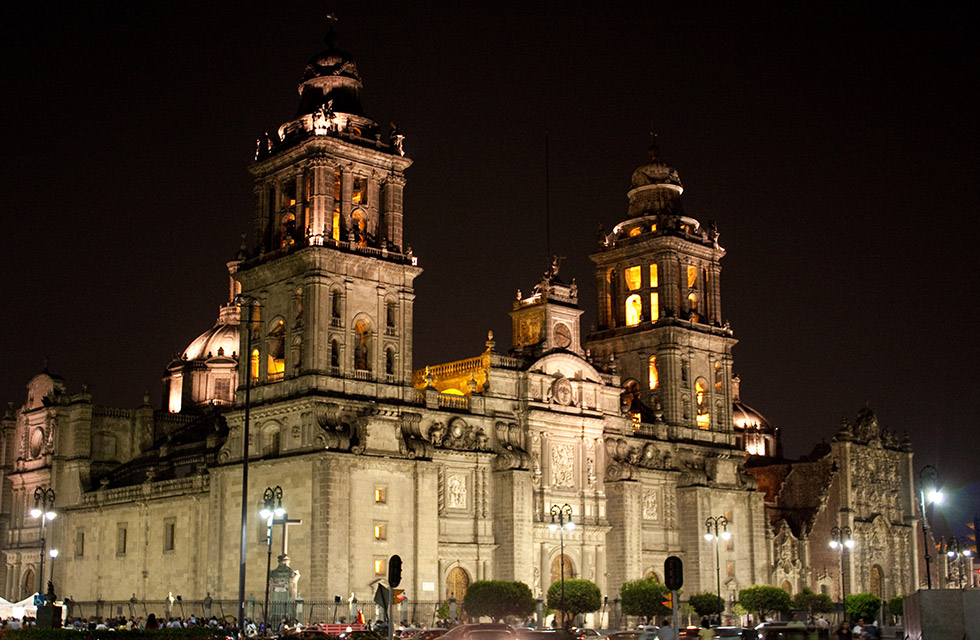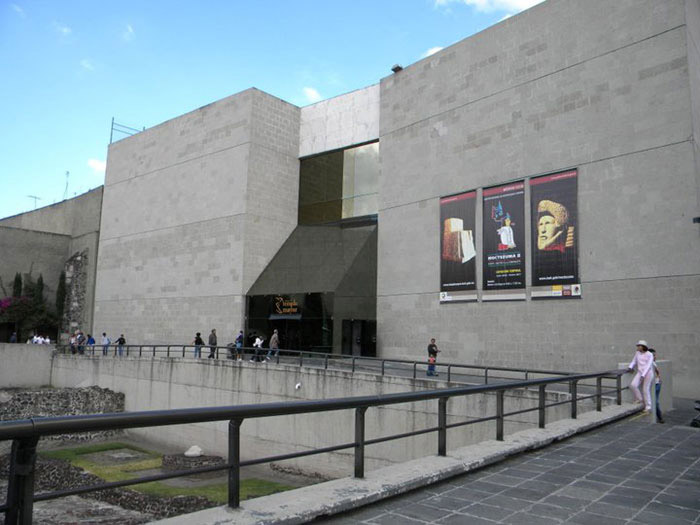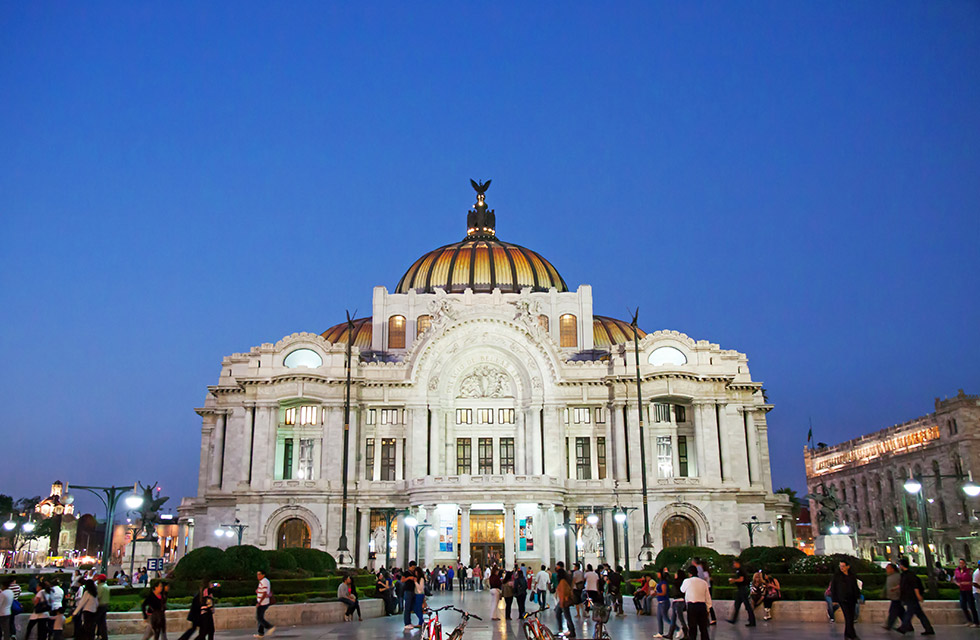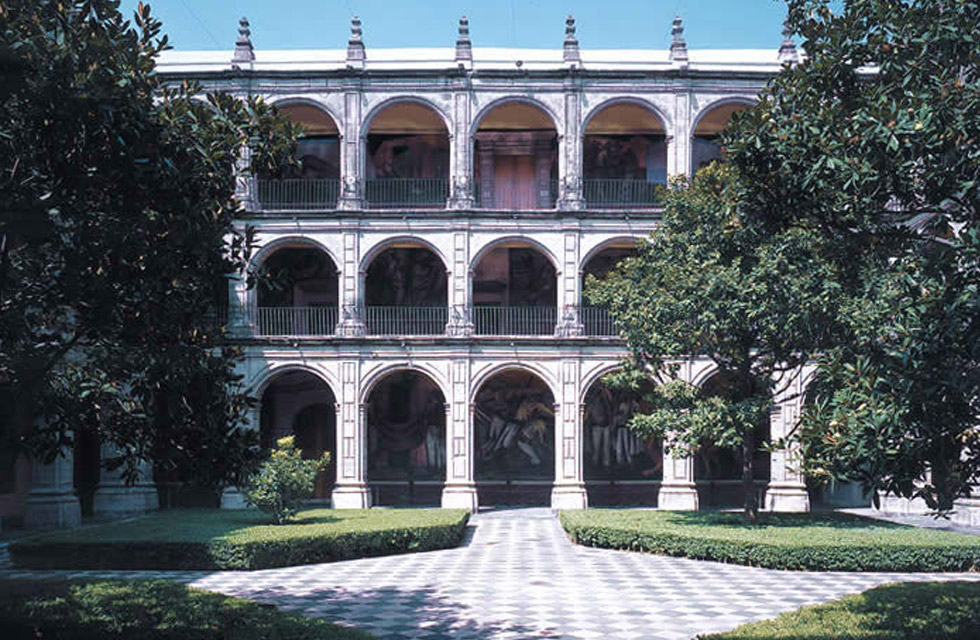Mexico City and its incomparable Historic District
A city so large requires time to get to know, and yet it’s practically impossible to discover every corner of what, up until recently, was officially known in Mexico as the “Distrito Federal.” The best place to start is in the city’s chaotic, eye-popping and ever-changing Historic District. Ready for its unforgettable sights?
The good news is that the great majority of the most important attractions in Mexico City are here in the Historic District.
An area of 668 city blocks covering 3.7 square miles, it’s possible to see the finest examples of Mexican architecture, enjoy exquisite local cuisine, wander down the city’s most emblematic streets, and dip into top-notch exhibits and cultural events. We recommend getting there by taxi or public transit. The District has several Metro stops and is famous for its low-price merchandise, hence it’s a meeting point for countless bargain hunters. So avoid going by private car, since you’ll be competing with a daily influx of traffic and crowds made up of more than just tourists.
The district’s architecture spans Mexico’s pre-Hispanic, Colonial, Independence and modern eras. The district has about 1,500 buildings, including temples, museums, hotels, shops, galleries, theaters and cultural centers, many of them cataloged as historic or artistic monuments. Not surprisingly, the district was declared a World Heritage Site by UNESCO in 1987.
Must-visit locations
The Metropolitan Cathedral
Construction began in 1573 on Mexico City’s Metropolitan Cathedral, the largest in Latin America. It took almost three centuries before it was finished in 1813. A beautiful example of colonial architecture, the cathedral also incorporates Renaissance, Baroque and Neoclassical elements. Historians note that the first stone of the cathedral was placed by Hernán Cortés in 1524, in what was originally supposed to be just a temple using material that was part of the Aztecs’ Templo Mayor built in the same location. Today, the cathedral is one of the most emblematic Christian buildings in the world.

The Metropolitan Cathedral
Templo Mayor
Here you’ll find the last remains of the temples of Tenochtitlán, the name of the capital of the Aztecs when the Spanish conquerors arrived. This archaeological zone in the center of Mexico City’s historic district was first uncovered in the second half of the last century, during subway construction. Be sure to take time to admire the pre-Hispanic treasures such as obsidian knives, sculptures, jade masks and turquoise at the ruins’ museum.

Templo Mayor
Bellas Artes (Opera House)
This Opera House is one of the most beautiful buildings of the city and perhaps the city’s best example of culture and art. Its construction was conceived by then President Porfirio Diaz, who wanted a national theater as spectacular as the Paris Opera. Thus, in 1904, the Italian architect Adamo Boari began construction with Carrara marble and a magnificent glass curtain designed by Tiffany’s for the theater. Following the Mexican Revolution, the Mexican architect Federico Mariscal reconciled the building’s Art Nouveau exterior with its Art Decó interior and the works of the Mexico’s most outstanding muralists were added, including Diego Rivera, David Alfaro Siqueiros, Jose Clemente Orozco, Juan O’Gorman and Rufino Tamayo. In addition to concerts, Bellas Artes’ numerous salons provide venues for important art exhibitions.

Bellas Artes (Opera House)
Garibaldi
A favorite of tourists, this square features frequent outdoor gatherings of mariachis, (traditional Mexican musicians) and performances of music from Mexico’s State of Veracruz and northern regions, not to mention romantic ballads played by trios. The musicians dress in typical regional attire with their musical instruments at the ready while waiting to be hired on the spot by couples or enthusiasts looking to be serenaded on location or at private gatherings. The square was remodeled in 2010 and the Tequila and Mezcal Museum was added.
Key museums
Museo del Estanquillo (Museum of the Little Shop)
The museum houses the personal collection of the writer Carlos Monsivais, encompassing paintings, photography, toys, albums, calendars, advertising and books. The collection is a representative example of the culture, society and politics of Mexico’s 20th century.
Address: Isabel La Católica 26
Munal
The National Museum of Art is housed in one of the most beautiful buildings in the Historic Center, created by the Italian architect Silvio Contri on the orders of then President Porfirio Díaz, for whom such construction served as a symbol of Mexico’s progress. The architectural style is eclectic, since it mixes Gothic and Classic styles, among others. The interior is carefully decorated in Italian style, embellished with sculptures, lamps and beveled glass. Today, the museum houses more than 3,000 works including paintings, sculptures, engravings, photography and 20th century furniture.
Address: Calle Tacuba 8
Museo Franz Mayer
This not-to-be-missed museum houses the most important collection of decorative arts in Mexico, with pieces created in Mexico, Europe and the Orient during the 16th and 19th centuries. It includes silverware, ceramics, furniture, textiles, sculpture and painting. The building’s beautiful colonial style also stands on its own and the museum offers temporary exhibitions, courses, conferences and workshops.
Address: Ave. Hidalgo 45
Antiguo Colegio de San Ildefonso
This building located on Justo Sierra street has a long history. It served as a Jesuit college for more than two centuries and was occupied by invading American and European troops in the eighteenth and nineteenth centuries before being converted to a site for the National Preparatory School. Mexico’s National Independent University established its official autonomy here in the 1920s, coinciding with the famous Mexican muralists of the time whose work can be seen on the walls of the school reflecting criticism of the country’s educational system and a denunciation of inequality. Most of the murals are still preserved and at the beginning of the nineties the building was reopened as a museum.

Antiguo Colegio de San Ildefonso
Address: Justo Sierra 16
You’re invited to take in Mexico City’s fascinating churches, neighborhoods and museums while staying at our hotel options, in the heart of the city’s Historic District.

